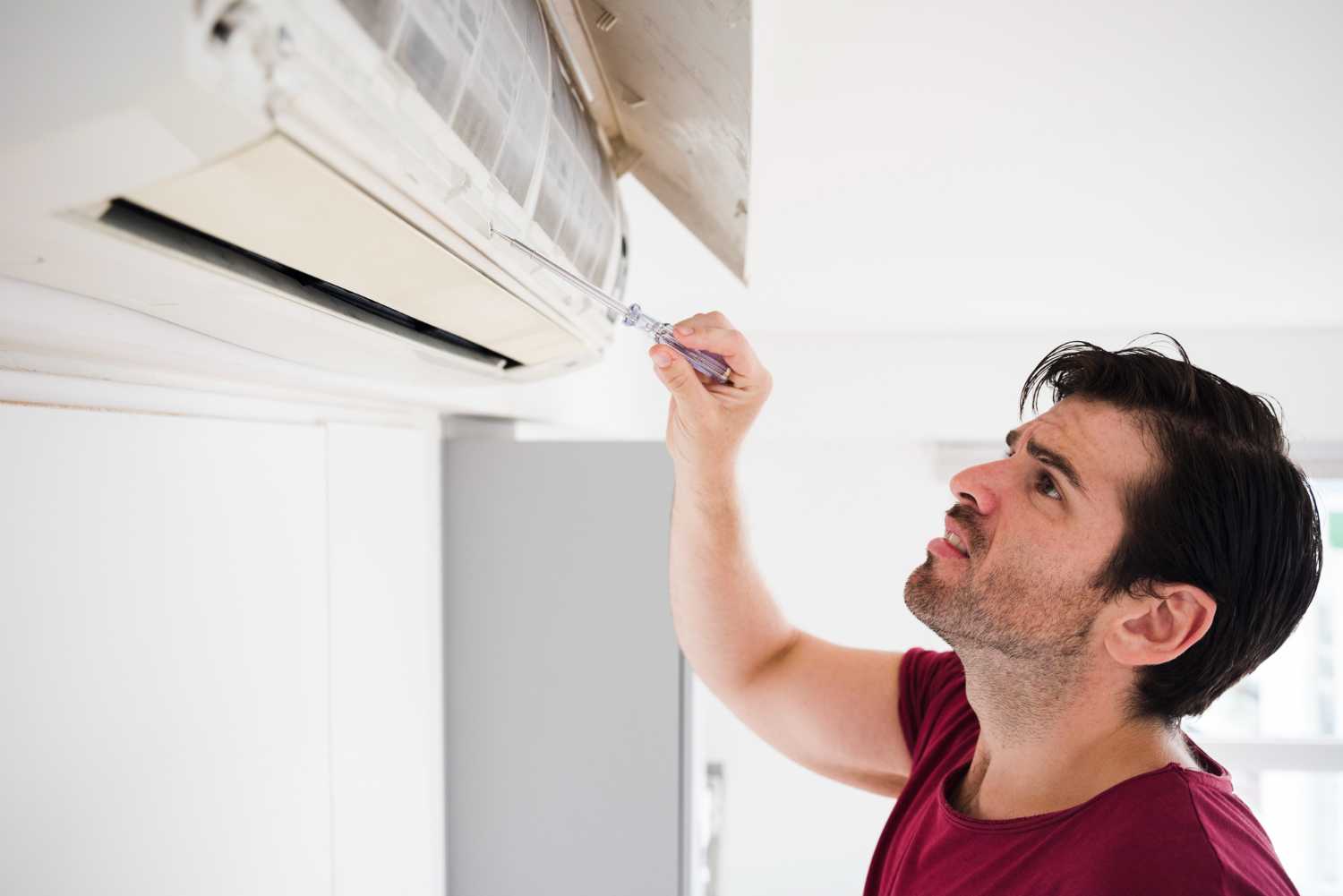Humidity levels in Phenix City can take a toll on more than just outdoor comfort. Once those high moisture levels start seeping into your home, your air conditioning system has to work much harder than it should. This often leads to uneven cooling, longer cooling cycles, and even higher energy use during the warmest months of the year. Many homeowners don’t realize just how much the humidity can affect AC performance until signs like warm indoor air or constant cycling become hard to ignore.
If your AC system feels like it’s running longer but cooling less, the humidity could be causing more problems than you think. As moisture levels inside your home rise, the demand on your system increases. Recognizing the signs early and learning what conditions encourage poor AC performance helps reduce stress on your system and keeps indoor comfort steady through peak summer in Phenix City.
How Humidity Affects AC Efficiency
Air conditioners are built to remove both heat and some moisture from the air inside your home. But when humidity levels are high day after day, the amount of moisture inside can exceed what your AC system is designed to manage. This puts extra workload on your unit and lowers its ability to cool your home properly.
When indoor humidity rises:
– The air feels warmer even if the temperature setting stays the same
– Your AC runs longer to reach the desired temperature
– Cooling feels less consistent, especially in larger or multi-story homes
One of the most direct effects of high humidity is lower cooling efficiency. Since humid air carries more moisture, it takes longer to cool down. While the thermostat may hold a set temperature, your home can still feel sticky or heavy. This often causes homeowners to lower the thermostat even further, thinking the system isn’t doing its job well enough. That leads to more energy use and extra wear on both the compressor and fan components.
Another impact of added humidity is more condensation forming on evaporator coils and ductwork. If the moisture doesn’t drain properly or airflow is limited, it can freeze up the coils or promote mold growth around ducts and vents. Over time, that can block airflow or reduce air quality in your living spaces.
A common example of humidity overload is when your thermostat shows a cool setting, yet you notice the air feels clammy, and furniture or floors feel slightly damp. This can happen even in homes with modern AC setups. It’s often a strong sign that humidity is overpowering your system’s moisture control capabilities.
Signs Your AC Is Struggling With Humidity
It’s not always obvious when humidity is interfering with your cooling system, but there are a few signs that can help you spot trouble early. Some of them show up in your energy usage, while others involve physical changes in your home.
Look out for the following signs that suggest your AC system isn’t keeping humidity under control:
1. Musty Odors: Lingering moisture in ductwork and returns can cause musty smells that never fully go away, even with cleaning.
2. Constant Cooling Cycles: If your AC runs often but doesn’t reach set temperatures, it could be working against persistent humidity.
3. Higher Energy Bills: Longer runtime leads to more electricity use, especially if homeowners lower their thermostat to overcompensate.
4. Foggy Windows and Moisture Around Vents: Excess condensation can show up on indoor surfaces, signaling air isn’t drying out properly.
5. Mold or Mildew Growth: Bathrooms and kitchens often show this first, but it can spread to baseboards and corners if humidity goes unchecked.
6. Collar and Sleeves Feel Damp Indoors: If your clothes or linens feel slightly moist without any water source nearby, excess humidity is likely the reason.
These signs are more than a minor discomfort. If ignored, they will continue reducing the efficiency of your system and may contribute to long-term damage. Knowing what to look for gives you a chance to take action before things get worse. Whether it’s a matter of system size, airflow problems, or blocked drainage, catching signs of excess humidity early can make all the difference in your comfort and your AC’s longevity.
Preventive Measures To Manage Humidity
Managing indoor humidity doesn’t have to mean installing all new systems. Often, it starts with the way your current AC unit is maintained and how your home handles airflow. Simple routine tasks can make a big difference in how well your system handles moisture in the air, especially during the hottest months in Phenix City.
Start with these proactive steps:
– Replace your AC filters every 30 to 60 days, especially during peak summer use. Dirty filters restrict airflow, forcing your system to work harder and reducing its ability to manage humidity.
– Clean and inspect your condensate drain line. If the drain gets clogged or blocked, your system may not be able to remove moisture properly, leading to buildup and mold.
– Keep all vents and registers open and unblocked. Restricted airflow makes it harder for your system to deliver cooled and dehumidified air evenly throughout your home.
– Use exhaust fans in kitchens and bathrooms to pull damp air out of the house. This reduces the overall burden on your air conditioner.
– Consider using a standalone dehumidifier in rooms that tend to stay damp. While it’s not a replacement for AC function, it can lessen the load and improve comfort in high-humidity areas.
Ventilation also plays a big role. Opening windows in the early morning or late evening when outdoor humidity is lower can help reduce moisture levels. But be careful. If the air outside is humid, this could backfire. Inspect weather stripping around windows and doors to prevent humid air from leaking inside.
Regular AC maintenance is a big part of preventing humidity problems. A cleaned and tuned system runs more efficiently and can better handle normal moisture levels. When parts like blower motors and evaporator coils are checked regularly, your system doesn’t have to work overtime to deliver cool, dry air.
Professional Solutions For Humidity Problems
If high humidity has become a consistent problem in your home, it may be time to bring in our professionals to assess the situation. Ongoing moisture problems can signal deeper issues with your current system or setup, like undersized units or poor ductwork design.
An AC tune-up performed by our technicians includes more than basic checks. They review refrigerant levels, inspect wiring and electrical components, test the blower’s speed settings, and clear out any clogged drain lines. These areas directly impact your cooling performance and how efficiently moisture is removed from the air.
Some homes in Phenix City may also benefit from enhanced moisture control features. For example, a variable-speed blower or a two-stage cooling system provides better airflow and more consistent dehumidification than a single-speed setup. Our professionals can help assess whether your current system supports these features or if simple modifications can improve your results.
Many homeowners experience long-term relief from humidity-related AC strain once their systems are properly tuned and set up for local summer conditions. This includes better airflow balance, improved comfort across rooms, and less risk for mold or moisture buildup indoors. Addressing these problems early also reduces wear on your equipment, helping it last longer and reduce the need for major repairs.
Keeping Your Home Comfortable In Phenix City
Managing indoor humidity is more than a seasonal task. It’s part of making sure your AC system keeps up with summer stress. When moisture levels inside rise, your cooling efforts can suffer quickly. From sticky air and musty odors to high energy bills and visible condensation, the signs are clear once you know what to track.
Taking simple steps like proper filter changes and ventilation can help manage minor problems. For more serious or continued issues, though, it makes sense to look at your system as a whole. A proper tune-up and evaluation can uncover gaps in performance and fix them before they grow into major repairs or ongoing discomfort.
Do not let high humidity decide how comfortable your home feels. By staying ahead with smart maintenance and targeted system checks, you can keep your home cool, dry, and ready for whatever summer brings to Phenix City. When the air inside feels right, everything else falls into place, especially during the hottest months of the year.
Facing persistent humidity issues in your home can make it hard to keep cool during these hot months, but scheduling an AC tune-up in Phenix City can help boost your system’s performance and control moisture more effectively. Priority Heating & Air understands that a well-maintained AC system means improved comfort in every room, and our professionals are ready to inspect your unit and adjust settings for better airflow and reduced strain. For a quick estimate or to book a service visit, please contact us today.

